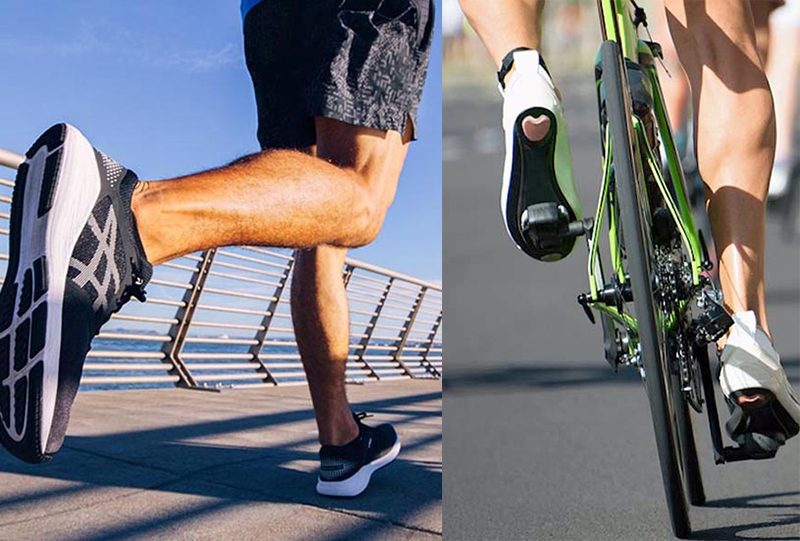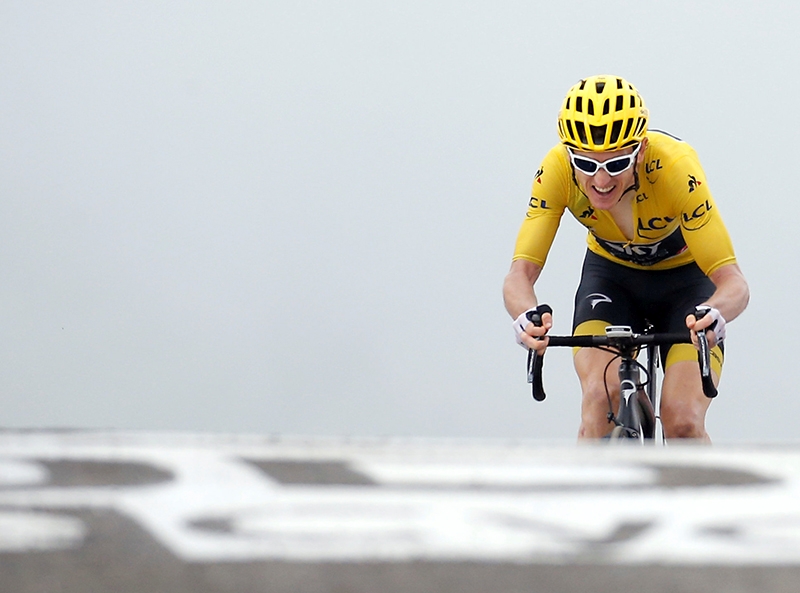You are viewing 1 of your 1 free articles. For unlimited access take a risk-free trial
Pre-training meals: bone up on calcium!

Andrew Hamilton looks at some recent research on how the right kind of pre-exercise snacks and meals could improve bone health in athletes
In recent years, growing evidence has suggested that performing high volumes of cycling training might not be ideal for long-term bone health. That’s because the smooth, weight-bearing nature of cycling lacks the stresses and impacts required to build maximum bone density, which combined with calcium losses through sweating and stress hormone secretion, creates a less favourable environment for bones.For example, French scientists found that compared to healthy non-cycling males, road cyclists had lower levels of BMD, and this was despite the fact that they were consuming significantly more dietary calcium (considered essential for bone health) than their sedentary counterparts(1). Another study by an international team looked at 30 pro cyclists who had participated in at least one of the main 3-week stage races (Giro d ’ Italia, Tour de France or Vuelta a Espana) in each of the previous three years(2). It found that the pro cyclists had significantly lower levels (9.1% less) of BMD than sedentary controls. Even more alarming was that in the lumbar vertebra of the lower back and femoral neck (ball joint at the top of femur), BMDs were 16% and 18% lower respectively.
Over the years, other studies have concluded that athletes participating in high volumes of non bone-loading exercise such as cycling and swimming are at risk of low BMD(3). Moreover, while it might help, evidence also suggests that adding in higher-impact endurance exercise such as running doesn’t completely offset this effect(4).
Why bone density matters
Accumulating maximum bone density is during your early-mid adult years is important because it lowers the risk of developing osteoporosis (a disease in which bones gradually become more porous, and therefore more fragile and likely to fracture – see figure 1) in later life. This is especially true for women who are at higher risk, due to hormone balance. In particular, the any disturbances in the levels of the hormone estrogen can results in reduced bone density development in early adulthood, and bone loss and the destruction of optimum bone architecture in mid and later life(5).Figure 1: Normal vs. osteoporotic bone

Osteoporotic bone is less dense than normal bone tissue. It’s weaker, more porous structure reduces its structural integrity.
Calcium-rich meals
Given the above facts, there’s been a lot of research into how athletes – particularly female athletes participating in low-bone loading endurance sports such as cycling, rowing, swimming etc – can protect bone health by ameliorating the bone density losses that are typically observed in this cohort. And since bone density is a direct function of the balance of calcium uptake into bones vs. calcium release from bones, there’s been speculation that manipulating the intake and timing of dietary calcium might yield benefits.In one study by Australian scientists, researchers investigated this theory in female cyclists – in particular whether consuming a pre-training calcium-rich meal might help to combat bone density loss during cycling(6). In this study, 32 trained female cyclists performed two trials on consecutive days, each trial consisting of 80 minutes steady riding at 60% of maximal aerobic power (moderately hard) followed by a 10-minute time trial. Two hours before each trial, the cyclists consumed a meal providing identical calorie counts and identical ratios/amounts of fat, protein and carbohydrate. However, the trials differed in terms of their calcium content:
- Trial #1 – a calcium-rich meal containing 1,350mgs of calcium from dairy sources
- Trial #2 - a calcium-poor meal containing just 46mgs of calcium
Figure 2: Bone stress markers and cycling(6)

In short, this research suggests that consuming a pre-exercise calcium-rich meal may provide a protective effect to bones. The researchers were keen to point out that that the calcium was from dairy foods (milk, yoghurt, cheese etc). This is important as prior research using pre-exercise calcium supplements (in the form of calcium carbonate) found no protective effect(7). The researchers also pointed out that many athletes fail to consume the 1000mgs of calcium recommended for general health, let alone the 1500mgs that some sports nutritionists now recommend for endurance athletes seeking optimum bone health(8)!
Practical advice
The practical implications for low-impact endurance athletes such as cyclists, rowers, skaters, swimmers etc (especially female athletes) are that in addition to consuming a calcium-rich diet (eg low-fat cheese, yoghurt and milk) providing at least 1000mgs per day, a high-calcium meal eaten around hours before training may give extra bone protection. For more information on the role of dietary calcium for bone health and how to optimise your intake, see this excellent article by Tom Whipple.In addition, it’s worth incorporating some regular heavy-weight resistance training into your schedule. This is an ideal training mode for loading the bones and building bone density, and markedly superior to higher-impact endurance exercises such as running/skipping etc. There another bonus too; numerous studies show that heavy weight training can boost muscle efficiency (see this article for an in-depth discussion), resulting in endurance performance gains – but that’s another story entirely!
References
- J Sports Med Phys Fitness 2009 ; 49 : 44 – 53
- Int J Sports Med. 2010 Jul;31(7):511-5
- Curr Sports Med Rep. 2012 Nov-Dec;11(6):328-34
- Curr Sports Med Rep. 2012 Nov-Dec;11(6):328-34
- Maturitas. 1996 May;23 Suppl:S65-9
- PLoS One. 2015 May 13;10(5):e0123302
- Effects of a calcium supplement on bone mineral density in male cyclists. J Sports Med Phys Fitness. In Press
- Int J Sports Med. 2010; 31: 511–515
Newsletter Sign Up
Testimonials
Dr. Alexandra Fandetti-Robin, Back & Body Chiropractic
Elspeth Cowell MSCh DpodM SRCh HCPC reg
William Hunter, Nuffield Health
Newsletter Sign Up
Coaches Testimonials
Dr. Alexandra Fandetti-Robin, Back & Body Chiropractic
Elspeth Cowell MSCh DpodM SRCh HCPC reg
William Hunter, Nuffield Health
Keep up with latest sports science research and apply it to maximize performance
Today you have the chance to join a group of athletes, and sports coaches/trainers who all have something special in common...
They use the latest research to improve performance for themselves and their clients - both athletes and sports teams - with help from global specialists in the fields of sports science, sports medicine and sports psychology.
They do this by reading Sports Performance Bulletin, an easy-to-digest but serious-minded journal dedicated to high performance sports. SPB offers a wealth of information and insight into the latest research, in an easily-accessible and understood format, along with a wealth of practical recommendations.
*includes 3 coaching manuals
Get Inspired
All the latest techniques and approaches
Sports Performance Bulletin helps dedicated endurance athletes improve their performance. Sense-checking the latest sports science research, and sourcing evidence and case studies to support findings, Sports Performance Bulletin turns proven insights into easily digestible practical advice. Supporting athletes, coaches and professionals who wish to ensure their guidance and programmes are kept right up to date and based on credible science.











